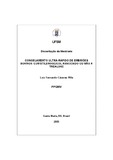| dc.creator | Pilla, Luiz Fernando Caceres | |
| dc.date.accessioned | 2017-06-14 | |
| dc.date.available | 2017-06-14 | |
| dc.date.issued | 2005-02-24 | |
| dc.identifier.citation | PILLA, Luiz Fernando Caceres. Ultra-rapid freezing of bovine embryos with ethylene
glycol with or without trehalose. 2005. 37 f. Dissertação (Mestrado em Medicina Veterinária) - Universidade Federal de Santa Maria, Santa Maria, 2005. | por |
| dc.identifier.uri | http://repositorio.ufsm.br/handle/1/10002 | |
| dc.description.abstract | Cryopreservation is currently the universal method for embryo storage, transport, sanitary control and trading. The conventional bovine embryo freezing method still has some drawbacks such as the freezing period and costs of the freezing equipment. In order to decrease costs and time, the effect of thealose on ultra-rapid freezing with ethylene glycol was evaluated. Ninety seven in vivo produced bovine embryos were randomly distributed in two treatments for ultra-rápid deep freezing with 3.M ethylene glycol (T1; n= 46) and 3.M ethylene glycol + 0.3M trehalose (T2; n= 51). In T1, embryos were exposed to a 3.0M ethylene glycol in Emcare® (ICP) holding media and in T2 to a 3.0M ethylene glycol plus 0.3M trehalose in Emcare® holding media. Embryos of both treatments were kept for 2 minutes in the freezing solutions; loaded in 0,25cc straws and there after they were exposed to N2 vapor during 20 seconds to be plunged immediately into liquid nitrogen. After thawing, embryos were transferred to previously synchronized recipients resulting at 28 days in 7 (15.21%) pregnancies in T1 and also 7 (13.72%) in T2. No significant difference was detected between treatments (P>0.05). The trehalose and ethylene glycol solution is suitable for direct transfer of bovine embryos. However, the conception rate obtained in this study do not allow its indication for commercial embryo freezing. | eng |
| dc.format | application/pdf | por |
| dc.language | por | por |
| dc.publisher | Universidade Federal de Santa Maria | por |
| dc.rights | Acesso Aberto | por |
| dc.subject | Congelamento | por |
| dc.subject | Ultra-rápido | por |
| dc.subject | Embriões bovinos | por |
| dc.subject | Transferência direta | por |
| dc.subject | Freezing | eng |
| dc.subject | Ultra-rapid | eng |
| dc.subject | Bovine embryos | eng |
| dc.subject | Direct transfer | eng |
| dc.title | Congelamento ultra-rápido de embriões bovinos com etilenoglicol associado ou não a trealose | por |
| dc.title.alternative | Ultra-rapid freezing of bovine embryos with ethylene
glycol with or without trehalose | eng |
| dc.type | Dissertação | por |
| dc.description.resumo | A criopreservação tem fundamental importância na armazenagem, transporte, controle sanitário e comércio de embriões. O método de congelamento rápido convencional de embriões bovinos ainda apresenta entraves como o tempo de execução e o alto valor comercial do equipamento. Com a finalidade de minimizar tempo de congelamento e os custos, avaliou-se o efeito da trealose no congelamento ultra-rápido de embriões bovinos com etilenoglicol. Noventa e sete (n=97) embriões bovinos produzidos in vivo foram congelados pelo método ultra-rápido com 3,0M de etilenoglicol e 3,0M de etilenoglicol + 0,3M de trealose. Os embriões foram distribuídos aleatóriamente em dois tratamentos. No tratamento 1 (T1) quarenta e seis (n= 46) embriões foram expostos à solução de 3,0M de etilenoglicol em solução de manutenção Emcare®(ICP) e cinqüenta e um (n= 51) embriões foram congelados com 3,0M de etilenoglicol associado a 0,3M de trealose em solução de manutenção Emcare®. Os embriões foram mantidos na solução de congelamento por 2 minutos, envasados em palhetas de 025cc, expostos ao vapor de nitrogênio por 20 segundos e submersos no nitrogênio líquido. Após o descongelamento, os embriões foram transferidos para receptoras previamente sincronizadas, resultando aos 28 dias, em 7 (15,21%) gestações no T1 e 7 (13,72%) no T2. Não houve diferença (P>0,05) entre os tratamentos. O acréscimo de trealose ao etilenoglicol mostrou-se viável para a transferência direta dos embriões, porém o índice de concepção obtido ainda não permite sua indicação no congelamento comercial de embriões bovinos. | por |
| dc.contributor.advisor1 | Rubin, Mara Iolanda Batistella | |
| dc.contributor.advisor1Lattes | http://buscatextual.cnpq.br/buscatextual/visualizacv.do?id=K4787138U6 | por |
| dc.contributor.referee1 | Mezzalira, Alceu | |
| dc.contributor.referee1Lattes | http://buscatextual.cnpq.br/buscatextual/visualizacv.do?id=K4728559Y0 | por |
| dc.contributor.referee2 | Rheingantz, Maria Gabriela Tavares | |
| dc.contributor.referee2Lattes | http://buscatextual.cnpq.br/buscatextual/visualizacv.do?id=K4787559J6 | por |
| dc.creator.Lattes | http://buscatextual.cnpq.br/buscatextual/visualizacv.do?id=K4702775Z2 | por |
| dc.publisher.country | BR | por |
| dc.publisher.department | Medicina Veterinária | por |
| dc.publisher.initials | UFSM | por |
| dc.publisher.program | Programa de Pós-Graduação em Medicina Veterinária | por |
| dc.subject.cnpq | CNPQ::CIENCIAS AGRARIAS::MEDICINA VETERINARIA | por |


